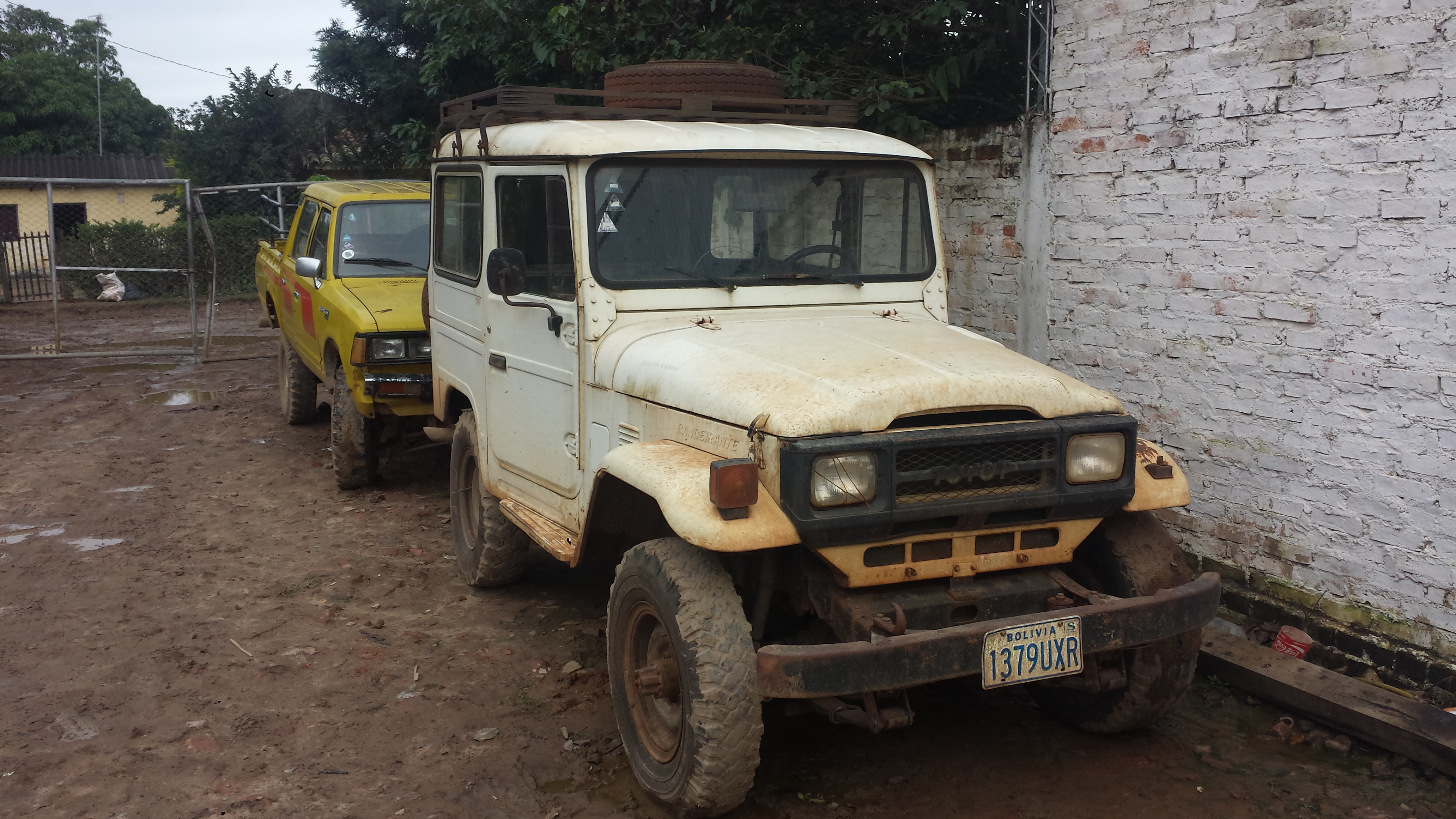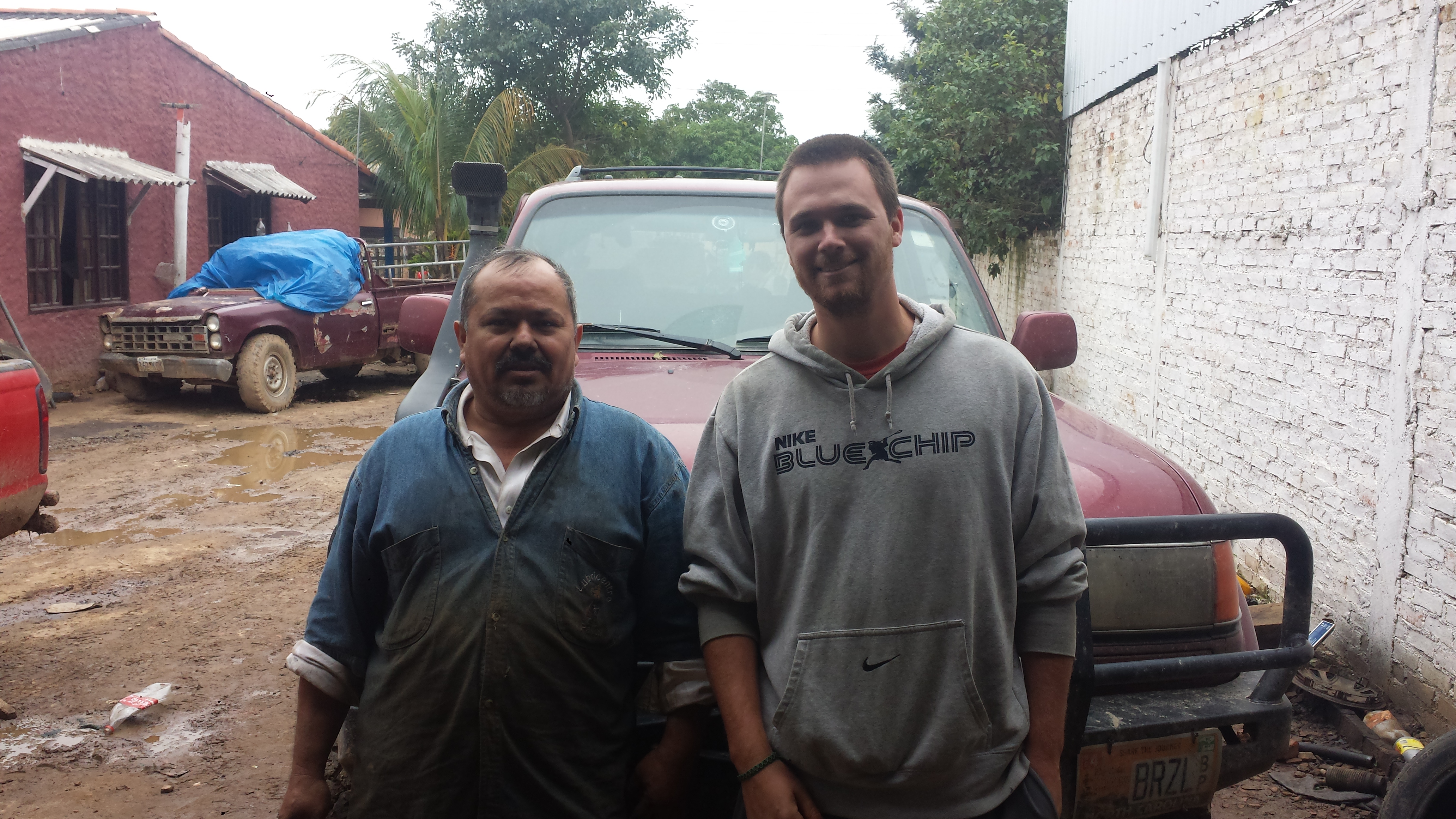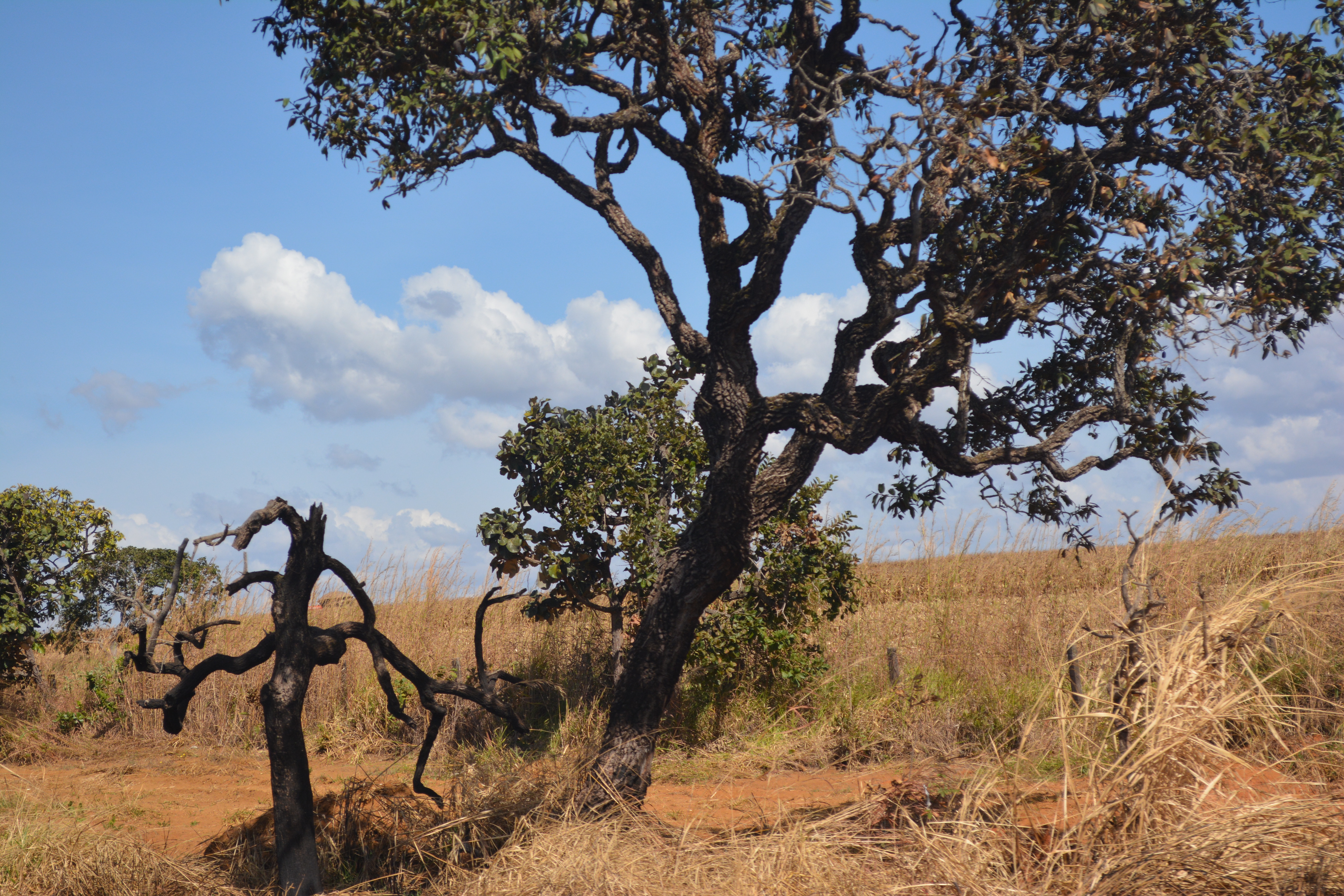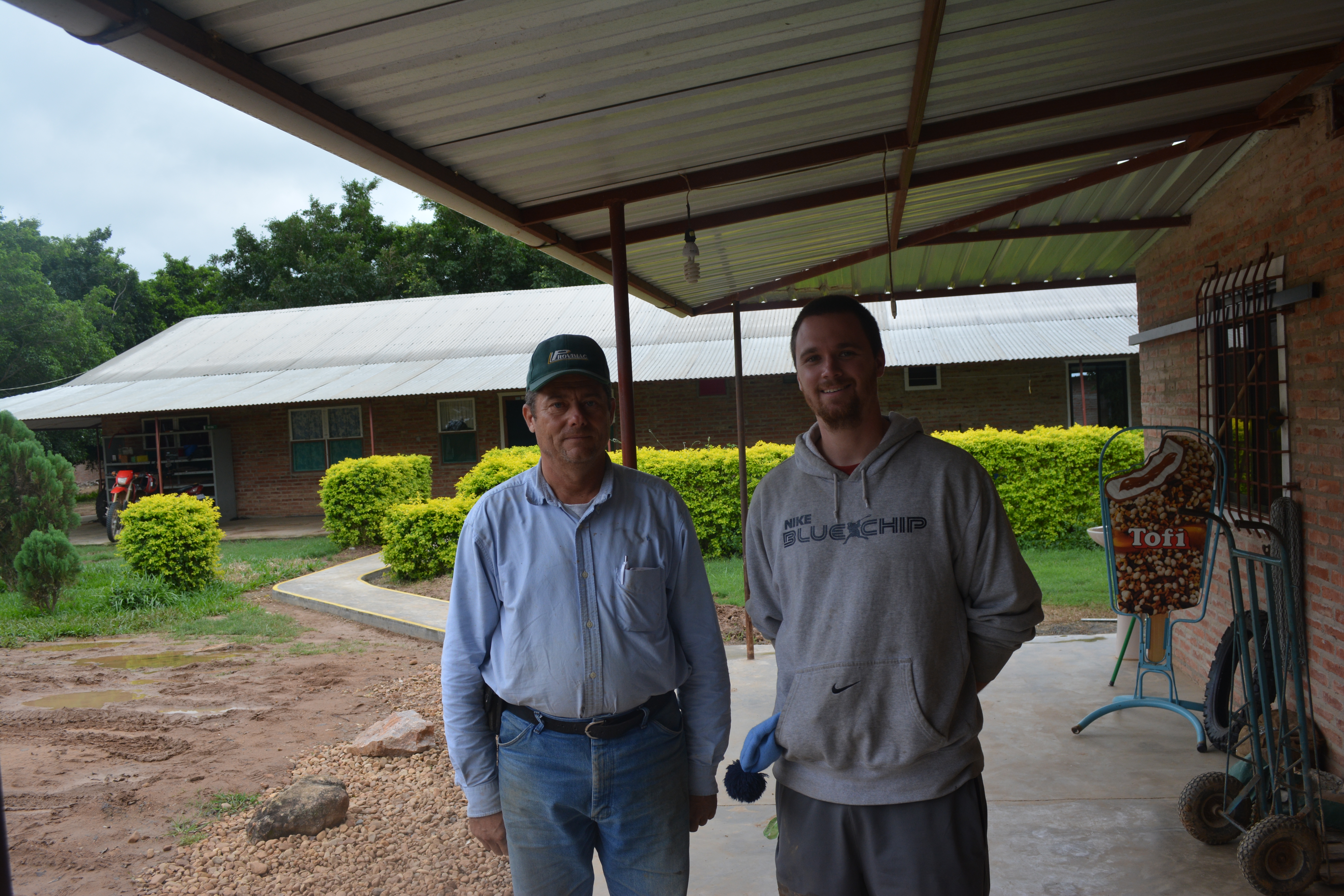We met Pirata at his house-turned-workshop just before eight the following morning. It was early but he was already at his ridiculously cheery self, making a few light jokes accompanied by his screeching laugh. We hoisted the Land Cruiser up on a few blocks of wood to take a look at the brakes.
He confirmed our fears: the rear brake pads were completely destroyed. In the states, this would be a fairly easy fix, just call AAA and swing by Advanced Auto Parts. Not so much in rural Bolivia. Although Pirata could rip out and install brake pads for us, he did not have any replacement parts on hand. The nearest auto parts store that carried new brake pads was an hour and a half away in the city of Santa Cruz. Having no other choice, we found a taxi driver in Pailon who would take us there and back.

Some of Pirata’s other Toyotas. In the US and Europe, Toyota stopped making the 40 series Land Cruiser in 1984. A factory in Brazil, however, kept making this version, with a Mercedes engine, until 2001.
We finally arrived in Santa Cruz to even worse news. Even though it was a Thursday morning, and the streets were bustling with people, we just happened to arrive during a national holiday in Bolivia. Every one of the stores we tried was closed for not just the day, but the entire weekend. We would have to wait four more days until Monday if we wanted new brake pads, and would absolutely miss our first two games in Brazil. Panic quickly set in, but we put our heads together and came up with a glimmer of hope.
On the ride back to Pailon, we called Pirata from our taxi driver’s phone. The day before he had gushed about his own (wrecked) FZJ80 Land Cruiser to us, and talked about how he wanted to fix it up one day like ours. We proposed that, because his didn’t run at the moment and we were in a huge hurry, we would buy the used brake pads off of his Land Cruiser if he would install them on ours. He reluctantly agreed, so long as we met his price. We were back in business!
The “new” pads were badly worn, our brake fluid was low, and our rotors were badly scratched, but the Land Cruiser was back on the road! We happily paid Pirata and our taxi driver and set off, once again on the road to Brazil and only a day and a half behind schedule. If things went to plan, we would still arrive in Cuiaba, Brazil the night before our first match, Russia v. South Korea.
We set off towards San Ignacio de Velasco, Bolivia, and eventually the tiny Brazil-Bolivia border at San Matias. As the day progressed, the roads that comprised the “highway” got progressively worse. We were still driving on poorly maintained pavement when we left Pailon and Santa Cruz, but by that afternoon the road was entirely dirt and clay. Gas stations were becoming increasingly infrequent, so somewhere near Chihuahua we stopped and decided to top off the tank and all 20 gallons of our spare tanks.
While we waited to fill up, a man approached us and struck up a conversation in English! He asked where were from and where we were going, and seemed genuinely interested in what we were doing in, of all places, Chihuahua, Bolivia. He told us that he was actually from Canada, and had been living in the middle of nowhere, Bolivia for many years on a small Mennonite Colony there. He even offered to give us a tour. Already behind schedule, and relishing the chance to speak English for the first time in weeks, we agreed.
It turns out, his “small” Mennonite Colony was massive! He took us to the general store, where we loaded up on some supplies, and showed us his home and fields. It turns out he enjoyed being able to practice his English, too; every other person we saw only spoke either Spanish or Low German. They farmed all of their own food and if something broke they had to fix it themselves, including their cars. He was even trying to build a small restaurant next to the previously mentioned gas station, so that locals would have a place to go eat! Sadly, we had to be on our way, and left the Colony to continue our drive. We pulled into the outskirts of San Ignacio de Velasco, Bolivia late that night and camped in an under construction gas station. The next day we would make our final push into Brazil.





Wow – finally getting the “rest of the story”. Thanks for the update.